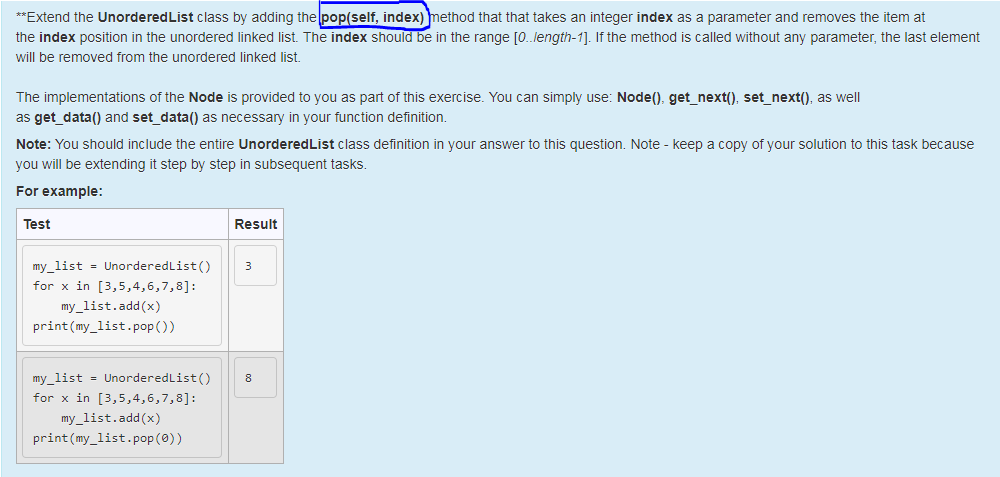Question
Using python . so adding in def pop(self, index) Extending from : class UnorderedList: def __init__(self): self.head = None self.count = 0 def add(self, item):
Using python .
so adding in def pop(self, index)
Extending from :
class UnorderedList: def __init__(self): self.head = None self.count = 0 def add(self, item): new_node = Node(item) new_node.set_next(self.head) self.head = new_node def remove(self, item): current = self.head previous = None while current: if current.get_data() == item: if previous == None: self.head = current.get_next() else: previous.set_next(current.get_next()) return else: previous = current current = current.get_next()
def search(self): curr = self.head while curr != None: if curr.get_data() == item: return True else: curr = curr.get_next() return False
def is_empty(self): return self.head == None def size(self): curr = self.head count = 0 while curr != None: count = count +1 curr = curr.get_next() return count def __str__(self): result = "[" node = self.head while node: result += ('' if result == '[' else ", ") + str(node.data) node = node.next result += "]"
return result def append(self, item): new_node = Node(item) current = self.head if current ==None: self.head = new_node return while current.get_next() !=None: current = current.get_next() current.set_next(new_node)

Step by Step Solution
There are 3 Steps involved in it
Step: 1

Get Instant Access to Expert-Tailored Solutions
See step-by-step solutions with expert insights and AI powered tools for academic success
Step: 2

Step: 3

Ace Your Homework with AI
Get the answers you need in no time with our AI-driven, step-by-step assistance
Get Started


